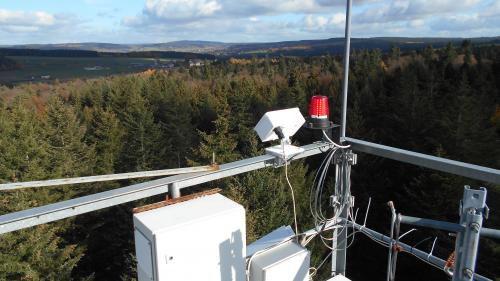Why measuring the air quality in Kinshasa?
Space-based measurements indicate that Central Africa is a global hotspot of formaldehyde (H2CO), due to biomass burning and to the emissions of the vegetation itself.
In addition, Kinshasa suffers from poor air quality associated with the widespread use of domestic combustions for cooking and its old car fleet.
Both processes release large amounts of nitrogen oxides (NOx = NO and NO2) and particulate matter (PMs). As in other African megacities experiencing demographic growth, we expect the air pollution to further deteriorate in Kinshasa. There is a clear need for local investigations of the atmospheric composition as only very few measurements are reported in Central Africa.
The collaboration between BIRA-IASB and the University of Kinshasa
Supported by the Belgian Space Policy, BIRA-IASB has initiated a collaboration with the University of Kinshasa (Unikin). The aim is to exchange knowledge on atmospheric chemistry through lectures and trainings and to measure the atmospheric composition in Kinshasa.
Since May 2017, our Congolese colleagues operate a compact spectrometer lent by BIRA-IASB. The instrument already gives information on NO2 which can be compared with satellite measurements.
As these first data appeared promising, BIRA-IASB has developed a new instrument, able to measure H2CO and NO2 simultaneously. It has been tested in the Ardennes and will be installed on the roof of Unikin in 2019. These measurements will be useful to validate the satellite products (e.g. TROPOMI) and chemistry models, some of them being also developed at BIRA-IASB.

